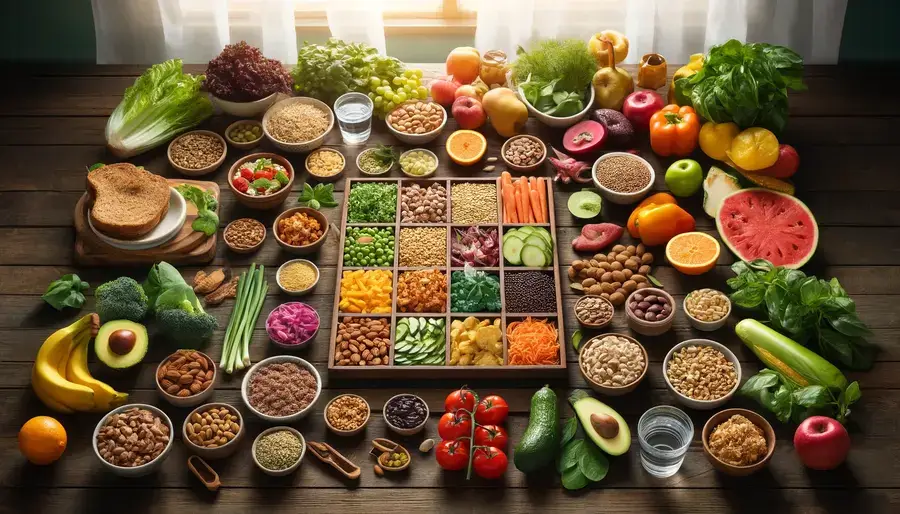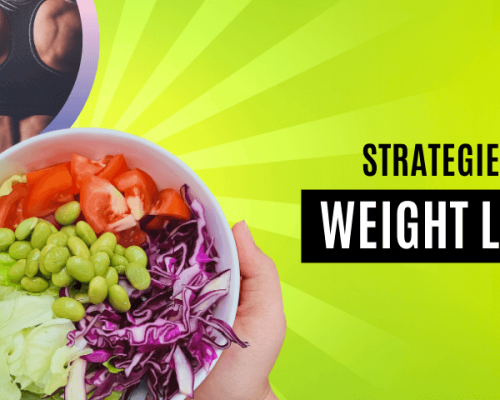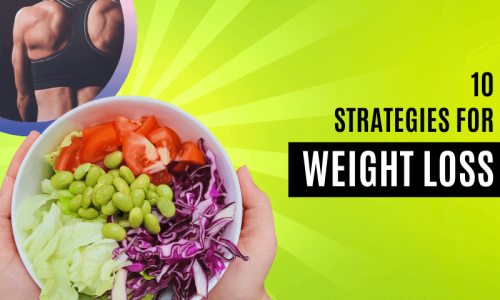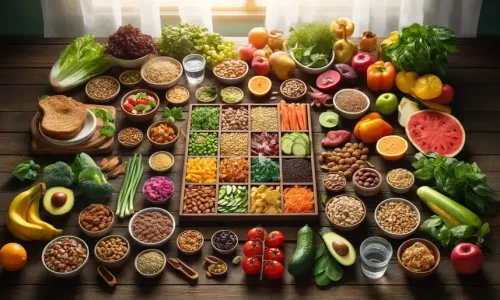Embarking on the journey to a healthier lifestyle begins with understanding the fundamentals of a healthy diet. In a world filled with fast foods, fad diets, and conflicting nutrition advice, it’s essential to return to the basics to build a solid foundation for your dietary habits. This guide aims to demystify the principles of balanced eating, providing you with the knowledge you need to make informed choices that will nourish your body and enhance your well-being.
Understanding a Balanced Diet
A balanced diet provides the body with the essential nutrients it needs to function correctly without exceeding the necessary caloric intake. It involves selecting a variety of foods from different food groups and consuming them in the right proportions to maintain optimal health.
The Components of a Balanced Diet – Healthy Diet
Carbohydrates
Carbohydrates are the body’s primary energy source. They are found in foods like fruits, vegetables, breads, cereals, and grains. Choosing whole grains over refined products enhances fiber intake, which aids in digestion and can help manage weight.
Carbohydrates are often vilified in diet culture, but they are essential as the body’s main fuel source. Complex carbohydrates, such as whole grains, brown rice, oats, and quinoa, provide sustained energy. They also contain essential nutrients like fiber, which helps regulate blood sugar levels and supports digestive health. Incorporate a variety of carbohydrate sources to keep meals interesting and nutritionally balanced.
Proteins
Proteins are crucial for building and repairing tissues and are an important building block of bones, muscles, cartilage, skin, and blood. Include a variety of protein sources in your diet, such as meat, fish, eggs, dairy, legumes, and nuts.
Protein is crucial not just for muscle repair and growth, but also for hormonal and enzymatic activity throughout the body. Animal-based proteins provide all essential amino acids in optimal ratios. However, plant-based proteins from beans, lentils, and tofu can also form complete proteins when combined properly (e.g., rice with beans). Experimenting with different protein sources can enhance your diet’s nutritional value and ensure you’re getting a broad spectrum of amino acids.
Fats
Fats are a significant source of energy and are essential for absorbing vitamins A, D, E, and K. Opt for healthy fats found in fish, nuts, seeds, avocados, and unsaturated oils like olive oil.
Healthy fats are vital for absorbing vitamins and providing essential fatty acids that the body cannot produce on its own. Monounsaturated and polyunsaturated fats reduce bad cholesterol levels and provide antioxidants. Sources like avocados, nuts, seeds, and fatty fish such as salmon and mackerel are excellent choices. Be mindful of trans fats and saturated fats, which should be limited to maintain heart health.
Vitamins and Minerals
These are essential for growth, well-being, and the avoidance of disease. Vitamins such as vitamin C, D, and B-complex and minerals like calcium, iron, and zinc should come primarily from food, not supplements.
Vitamins and minerals play key roles in body functions, such as bone formation, vision, and blood clotting. For example, vitamin D is critical for bone health and immune function, while iron is necessary for transporting oxygen in the blood.
A varied diet typically provides most of the micronutrients your body needs. Leafy green vegetables, for instance, are rich in vitamin K, iron, and calcium, while citrus fruits are an excellent source of vitamin C. It’s important to eat a rainbow of foods to benefit from the wide range of micronutrients different foods offer.
Water
Water is essential for life. It regulates body temperature, transports nutrients and oxygen, and helps with digestion. Drinking plenty of water is crucial for maintaining health.
Water does more than just quench thirst. It’s involved in every bodily function, from flushing out toxins to nutrient absorption and digestion. The amount of water each person needs can vary based on factors like age, weight, climate, and physical activity levels. A good rule of thumb is to drink at least 8 glasses a day, and more if you are active or live in a hot climate. Remember, beverages like tea and foods high in water content, such as cucumbers and oranges, also contribute to your hydration.
Balancing Your Meals
Creating a Meal Plan
Start with planning your meals around your lifestyle. Consider your calorie needs based on your age, gender, and physical activity level. The USDA’s MyPlate is a helpful tool that visually represents portions of the five food groups: fruits, vegetables, grains, protein, and dairy, to balance your plate at each meal.
Portion Control
Understanding portion sizes helps avoid overeating even healthy foods. Use smaller plates, bowls, and cups to make your portions appear larger. Don’t eat out of large containers, as it’s harder to gauge how much you’ve consumed.
Diversity in Your Diet
Incorporating a wide variety of foods in your diet ensures that you get a broad spectrum of nutrients. Try new foods and rotate your choices to expose your body to different nutrients and enhance your meal enjoyment.
Practical Tips for Everyday Eating
Shopping Smart
- Based on your meal plan, create a grocery list and follow it.
- Shop the perimeter of the store as it typically features fresh produce and whole foods.
- Avoid high-fat, high-sugar, and overly processed foods.
Cooking at Home
- Prepare most of your meals at home to control the ingredients and portions.
- Try adding spices and herbs to food instead of salt to give it flavor.
- Cook in bulk to save time and ensure you always have healthy meals on hand.
Eating Out
- Choose restaurants that offer fresh, whole-food options.
- To limit your intake, request dressings and sauces on the side.
- Opt for steamed, grilled, or broiled dishes rather than fried.
Overcoming Challenges
Dealing with Cravings
- Substitute unhealthy snacks with healthier alternatives, such as fruits or nuts.
- Drink water or herbal tea to combat cravings, as sometimes thirst is confused with hunger.
- Allow yourself an occasional treat to prevent feelings of deprivation.
Staying Motivated
- Keep a food diary to track what you eat and recognize patterns that may lead to overeating or unhealthy choices.
- Establish reasonable objectives and recognize your accomplishments.
- Involve friends or family in your healthy eating efforts to build support and accountability.
Understanding Hunger and Fullness
Listening to your body’s cues for hunger and fullness can prevent overeating. It’s important to eat when you’re hungry but stop before you are uncomfortably full. Mindful eating practices, such as eating slowly and without distractions, can help you better recognize these signals.
The Impact of Stress on Eating Habits
Anxiety can cause emotional eating, which might interfere with your dietary objectives. Finding healthier ways to cope with stress, like exercise, meditation, or hobbies, can help you maintain your diet and overall well-being.
Building Healthy Eating Habits
Consistency Over Perfection
Adopting a balanced diet is more about consistency than perfection. Allow for flexibility in your diet so it’s sustainable long-term. Occasional indulgences won’t derail your progress if the majority of your diet is balanced and nutritious.
Involving Family in Healthy Eating
Making healthy eating a family affair can boost your success. When families eat healthy meals together, children learn to make better food choices outside of the home as well. Cooking with your family can be a fun way to spend time together and teach important life skills.
Advanced Nutritional Concepts for Long-Term Health
Anti-inflammatory Foods
Incorporating anti-inflammatory foods like turmeric, berries, and fatty fish can combat inflammation in the body, which is linked to many chronic diseases. These foods can be delicious additions to meals and offer significant health benefits.
Gut Health
A healthy gut is crucial for overall health, impacting everything from immunity to mental health. Foods rich in probiotics (like yogurt and kefir) and prebiotics (such as garlic and onions) support a healthy digestive system.
Conclusion
Mastering the basics of a balanced diet doesn’t require drastic changes overnight. By making small adjustments and setting manageable goals, you can create lasting habits that significantly improve your health. Remember, the goal of a balanced diet is to provide your body with the necessary nutrients while enjoying your meals and maintaining an overall healthy lifestyle. Use this guide as a stepping stone to more informed food choices and a healthier you.








